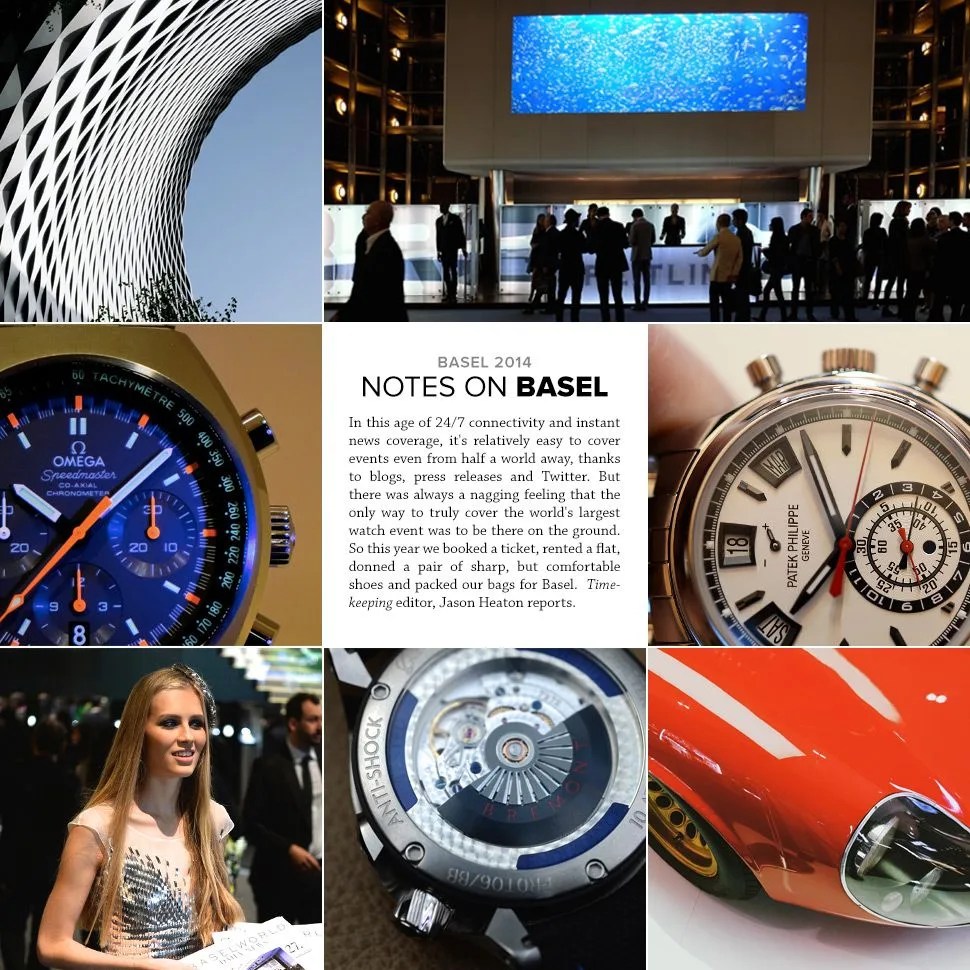In this age of 24/7 connectivity and instant news reports via Twitter and press releases, it’s relatively easy to cover events even from half a world away. For the past couple of years, that’s how we covered the three-ring horological circus known as BaselWorld. But there was always a nagging feeling that the only way to truly report on the world’s largest watch event was to be there on the ground. So this year we booked a ticket, rented a room, bought some comfortable shoes and packed our bags for Basel.
MORE FROM BASELWORLD: Preview: BaselWorld 2014 | Best of BaselWorld 2013
This place is big — the sheer acreage of the event is hard to fathom. Spread through two huge halls, a few smaller ones and a couple of outliers squatting in hotel conference rooms, this is no ordinary trade show. Why so much space just to show off things as small as wristwatches? Well, because the showing off requires massive and elaborate booths.
“Booth” is an understatement and a misnomer. The bigger brands like Rolex, Breitling and TAG Heuer had booths that occupied blocks of space within the halls. Imagine a common two-story bungalow — then double it. Typically, each booth uses the first floor as a sort of boutique, with glass display cases for the year’s “novelties” surrounded by the requisite decor that evokes the feelings the brand is trying to project. The Rolex booth was conservative and minimalist, reflecting the company’s watches. Meanwhile, Breitling had a massive aquarium with colorful fish swimming in it, ostentatious enough to become a well-known landmark of this year’s show. TAG Heuer’s booth was all edgy and modern, in keeping with the brand’s focus on youth, technology and sports timing.
Vintage continues to be a popular inspiration, as evidenced by Tudor’s new Ranger, OMEGA’s Seamaster 300 and pretty much Hamilton’s entire lineup.
Of course, not all the companies that exhibit at BaselWorld can afford palatial booths. We took what little free time we had between appointments to stroll past the smaller booths of suppliers (movement and cases, strap makers, component specialists) and independent watchmakers. Plenty of exciting things are happening in these small shops. Bill Yao of MkII Watches let us in on some goodies he has in store for tool watch lovers; the brothers Groenefeld took time to explain their new Parallax Tourbillon; Devon Works showed us their steampunk creations and told us about future plans for a mechanical movement for their Tread watch, partnering with no less an expert than American watchmaker RGM. A quick dip into the DOXA booth turned up a vintage gem on their Marketing VP, who was wearing Jacques Cousteau’s personal SUB 300T Sharkhunter. As is so often the case, the best stuff was found off the beaten path.
So what about the watches? Some themes and trends bubbled to the surface. Vintage continues to be a popular inspiration, as evidenced by Tudor’s new Ranger, OMEGA’s Seamaster 300 and pretty much Hamilton’s entire lineup. NATO straps were everywhere, from standard nylon ones to an embossed crocodile leather version. Companies continue to experiment with colorful materials and coatings like rubber-coated steel, color-impregnated ceramic and a lot of PVD and DLC in everything from red gold to brass. Bremont is using a new super-hard 465 stainless steel that came out of its new partnership with Boeing, and Linde Werdelin’s newest Oktopus features a new proprietary alloy that is half the weight of titanium.
